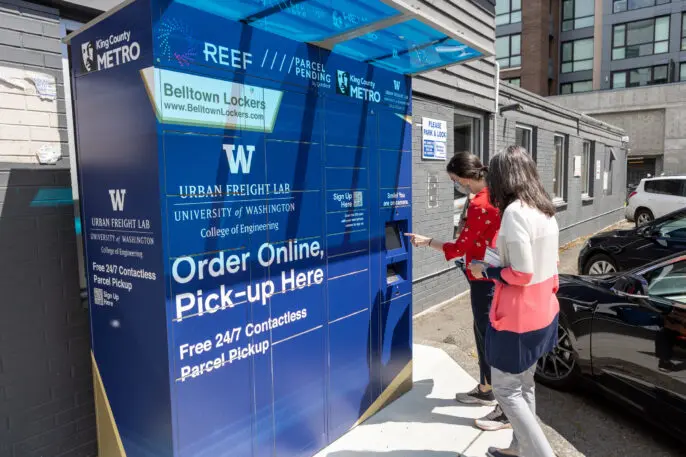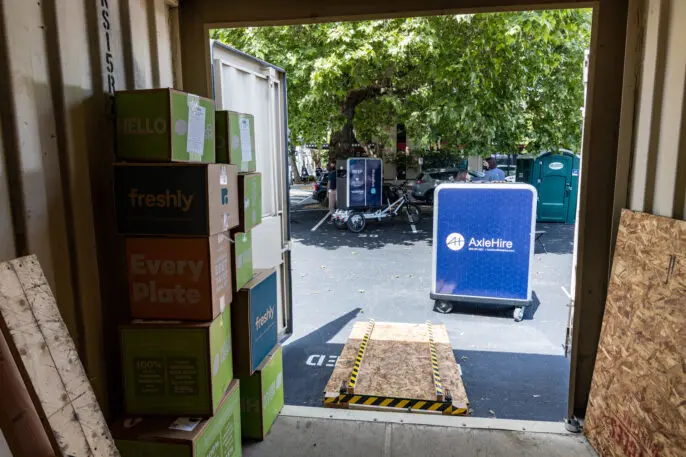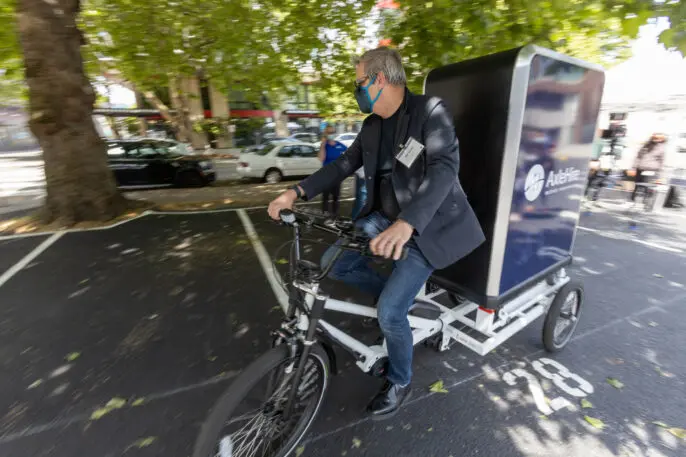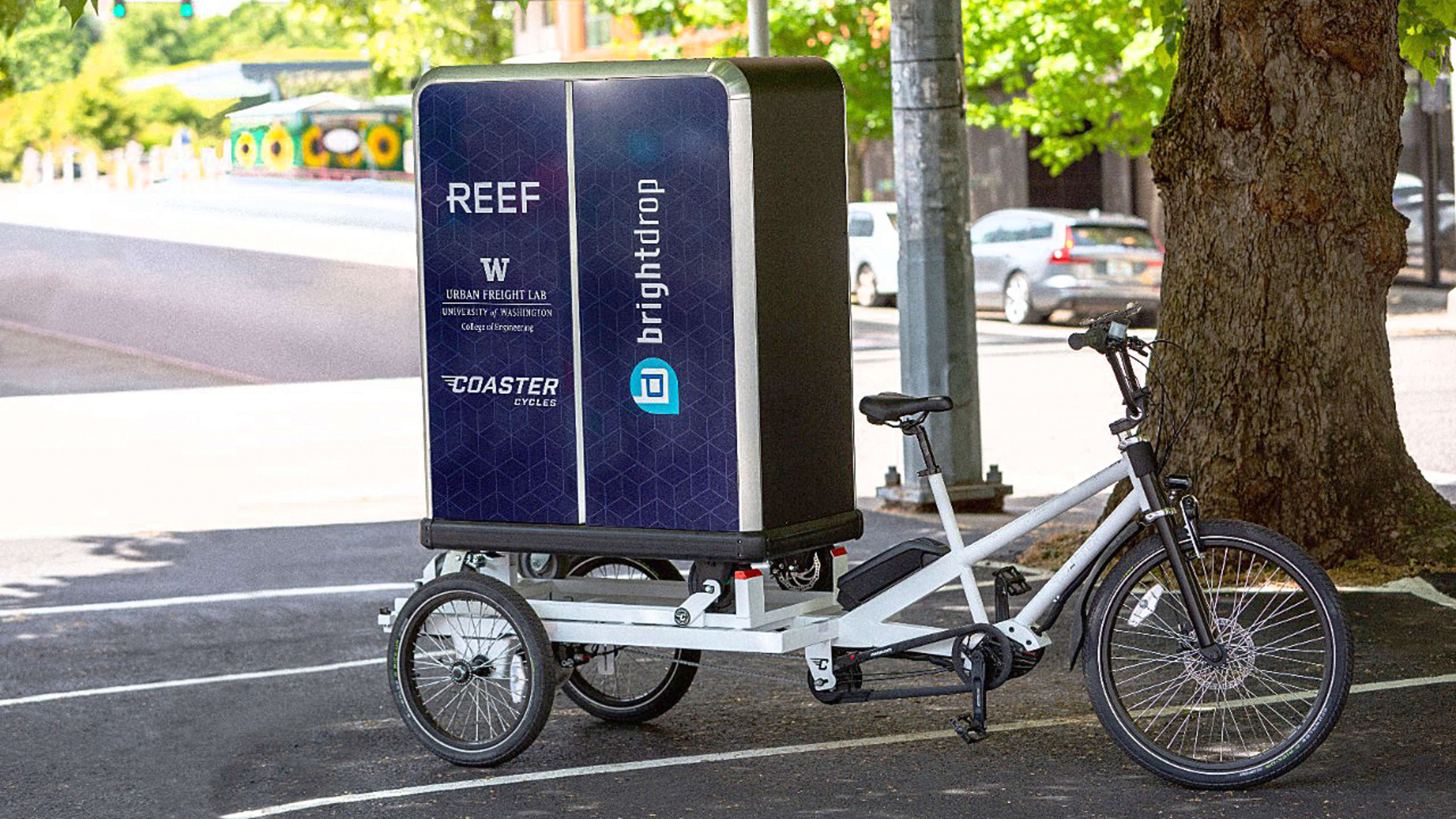For three months last summer, residents in one Seattle neighborhood received their packages via electric cargo bike rather than a delivery van, as part of a pilot program testing new innovations to urban delivery. Bike riders made deliveries between a “microhub” and peoples’ homes. The switch led to fewer miles traveled per delivery and a 30% drop in tailpipe CO2 emissions per package.
The issue of the “last mile”—the final step in the delivery process when a package goes from transportation hub to customer—has become a headache for cities, where delivery trucks cause congestion and spew carbon emissions as they drop off more and more packages. The Seattle pilot—a partnership between the city, Coaster Cycles, logistics company AxleHire, and others, coordinated by the University of Washington’s Urban Freight Lab—tested last-mile alternatives like e-cargo bikes and delivery lockers, in hopes of finding solutions that reduced emissions and eased traffic.

That finding came from a recent report that looks at the operations of the delivery hub. (Evaluations of the pilot’s infrastructure components, like the delivery lockers, and residents’ impressions of the changes are forthcoming). Along with reducing emissions, using e-bikes and the microhub halved the number of miles traveled per package compared to traditional truck routes, which helped to reduce congestion. While trucks may follow routes that are longer and more spread out, the microhub served a small neighborhood, allowing the e-cargo bikes to make quick, direct trips; the bikes generally didn’t travel more than two miles from that hub.

The researchers caution that the fact that the e-cargo bikes delivered fewer packages per hour than trucks might have been affected by the pilot’s small scale, plus infrastructure challenges, may have affected that finding. (In other studies, electric cargo bikes made deliveries faster than vans.) There were a few hiccups, like riders having trouble finding where to park or locking their bikes up every time they delivered a package, which ate up time. The bikes were also heavy, so if they were delivering to someone in the middle of a block, they couldn’t ride up the curb; they would have to go to the end of the street to get up onto the sidewalk.

Testing these ideas before they can be called solutions is a crucial step in designing better last-mile delivery, and Goodchild hopes her lab’s research helps inspire additional delivery pilots. Delivery hubs could be more than just a place for e-bike delivery riders to depart from; they could be community centers, with a post office, local shop, or even a park. Delivery logistics have become a thing that happens to neighborhoods without their input, Goodchild says, but a last-mile delivery hub could give communities the chance to influence what delivery looks like in their neighborhood.
At the root of this issue, she adds, is that cities need to support urban logistics, rather than take a hands-off approach. “Should a city be providing space in dense neighborhoods for logistics activities? Absolutely they should, and they’re not doing that now,” she says. “We’re trying to make sure there’s good evidence of what the impacts are and to refine that model, but certainly with the intent of cities being supporters of sustainable solutions…rather than feeling like they’re at the mercy of whatever happens.”
Recognize your brand’s excellence by applying to this year’s Brands That Matter Awards before the early-rate deadline, May 3.
